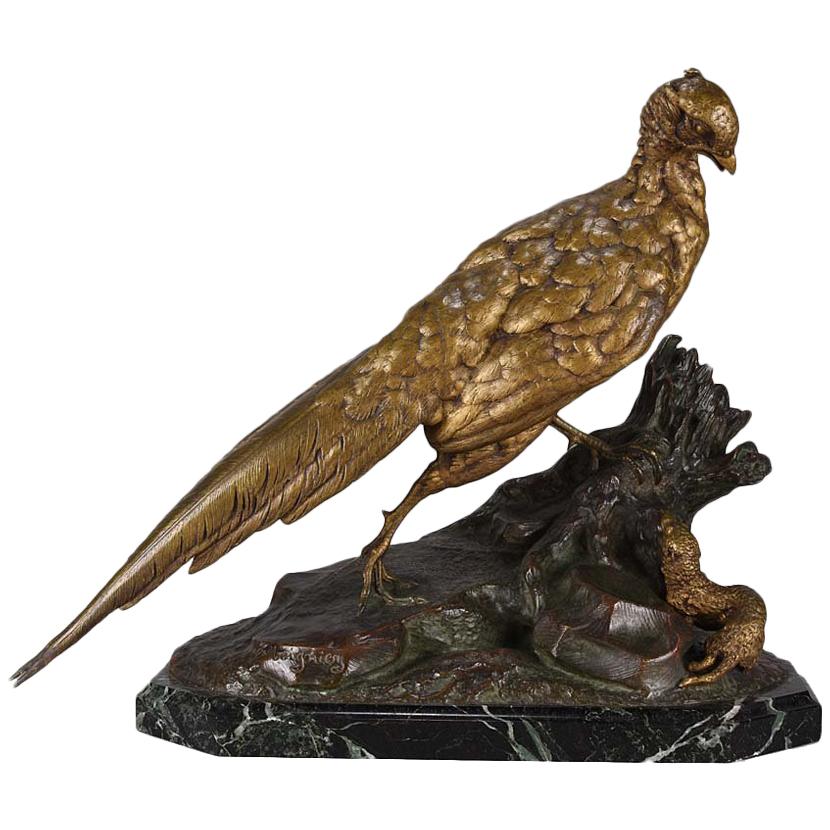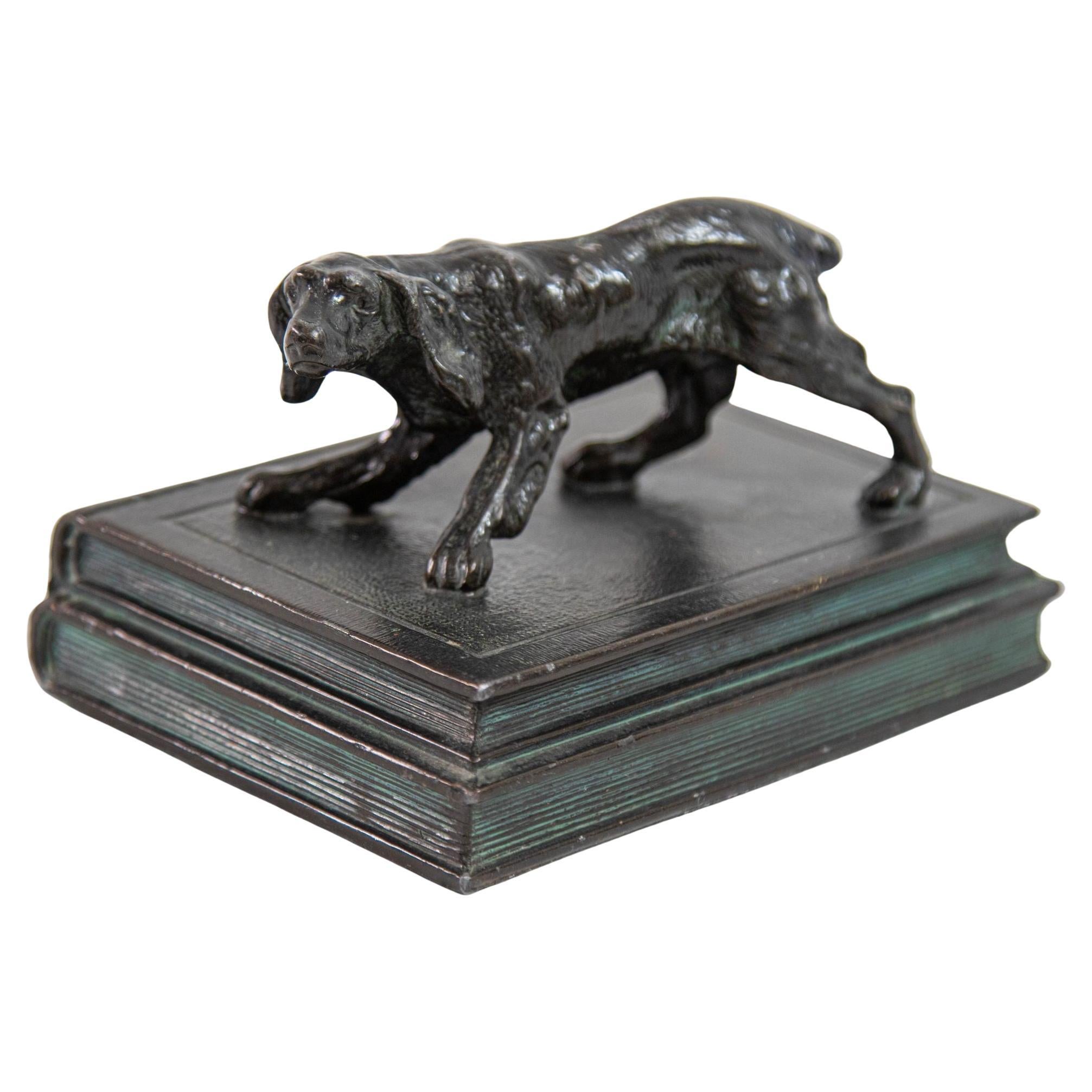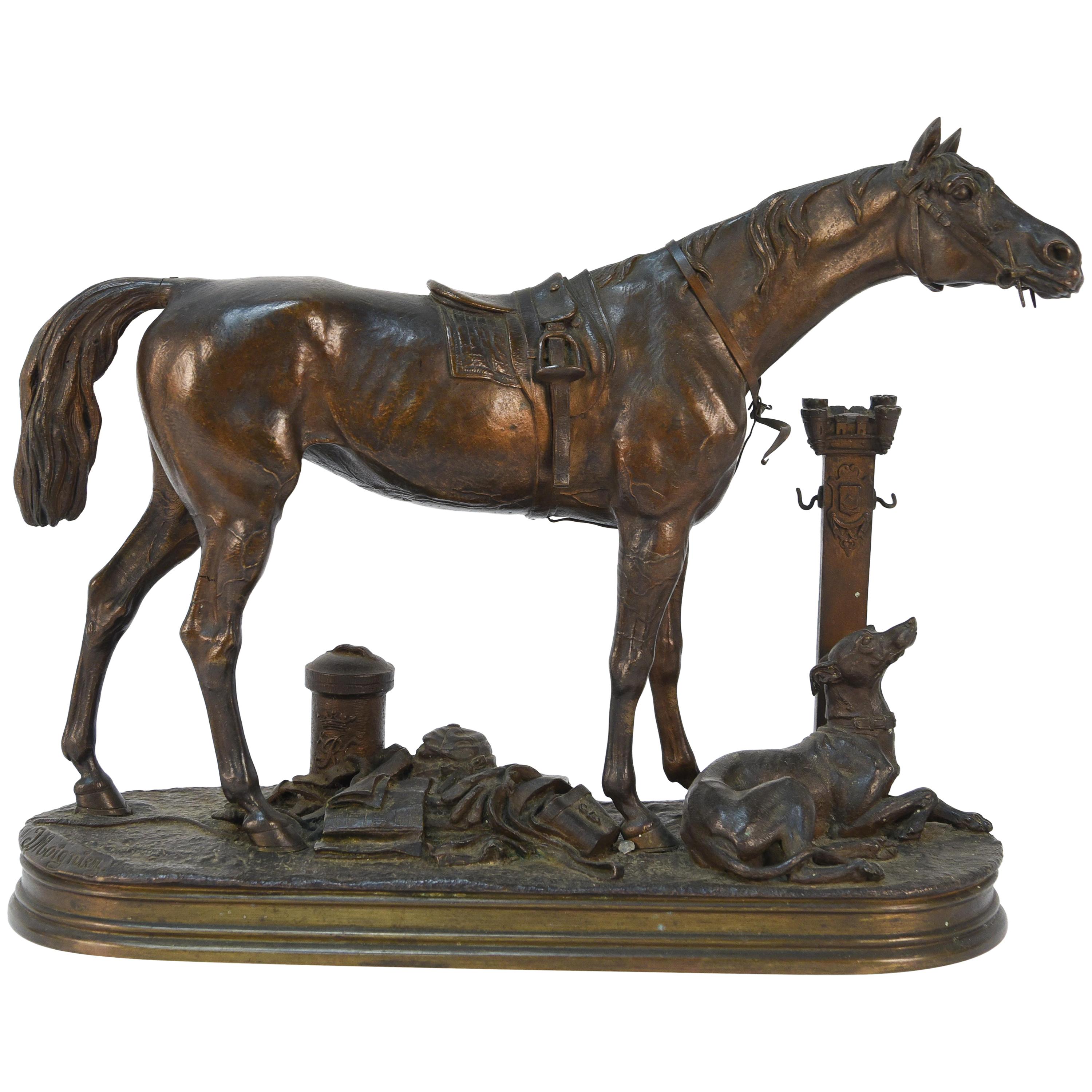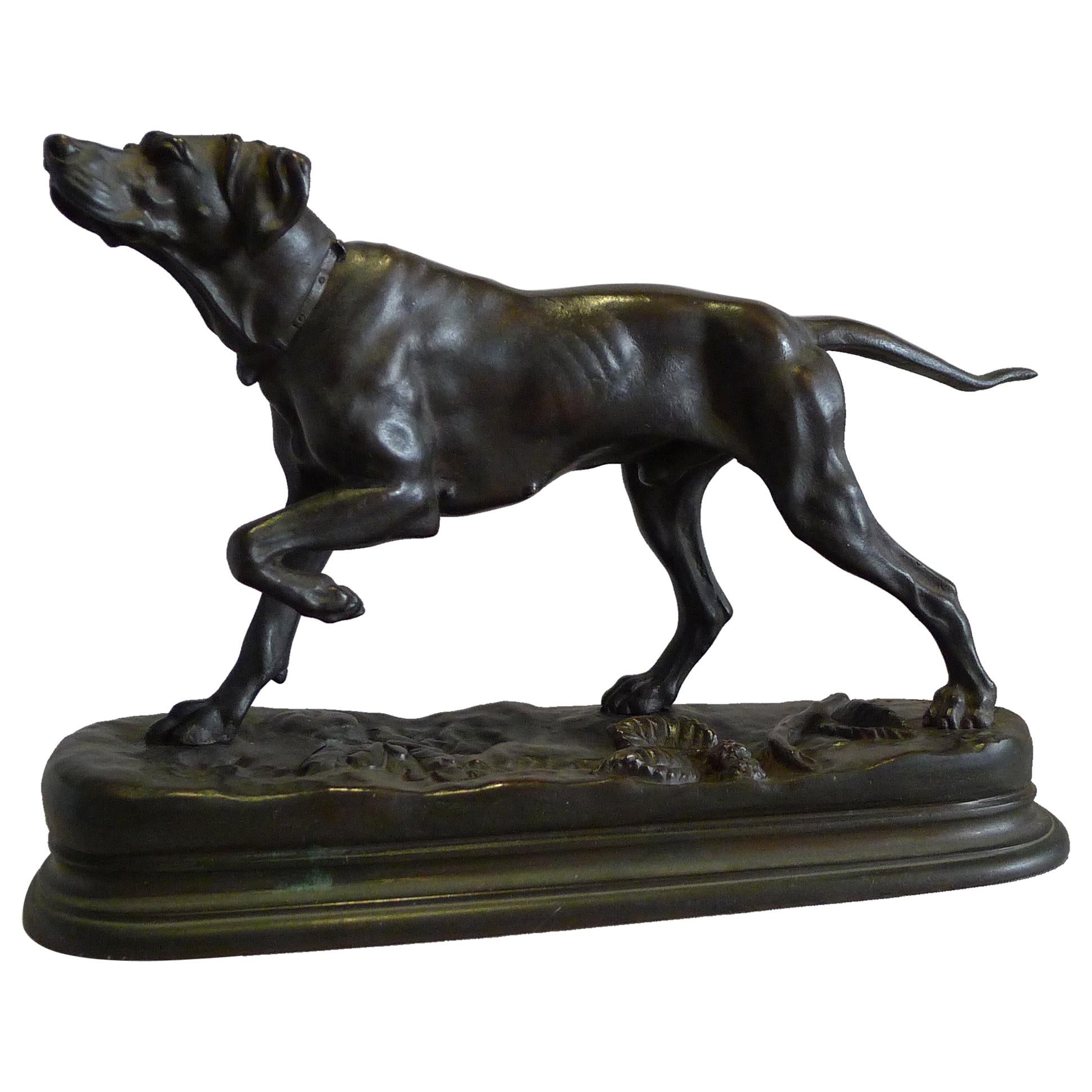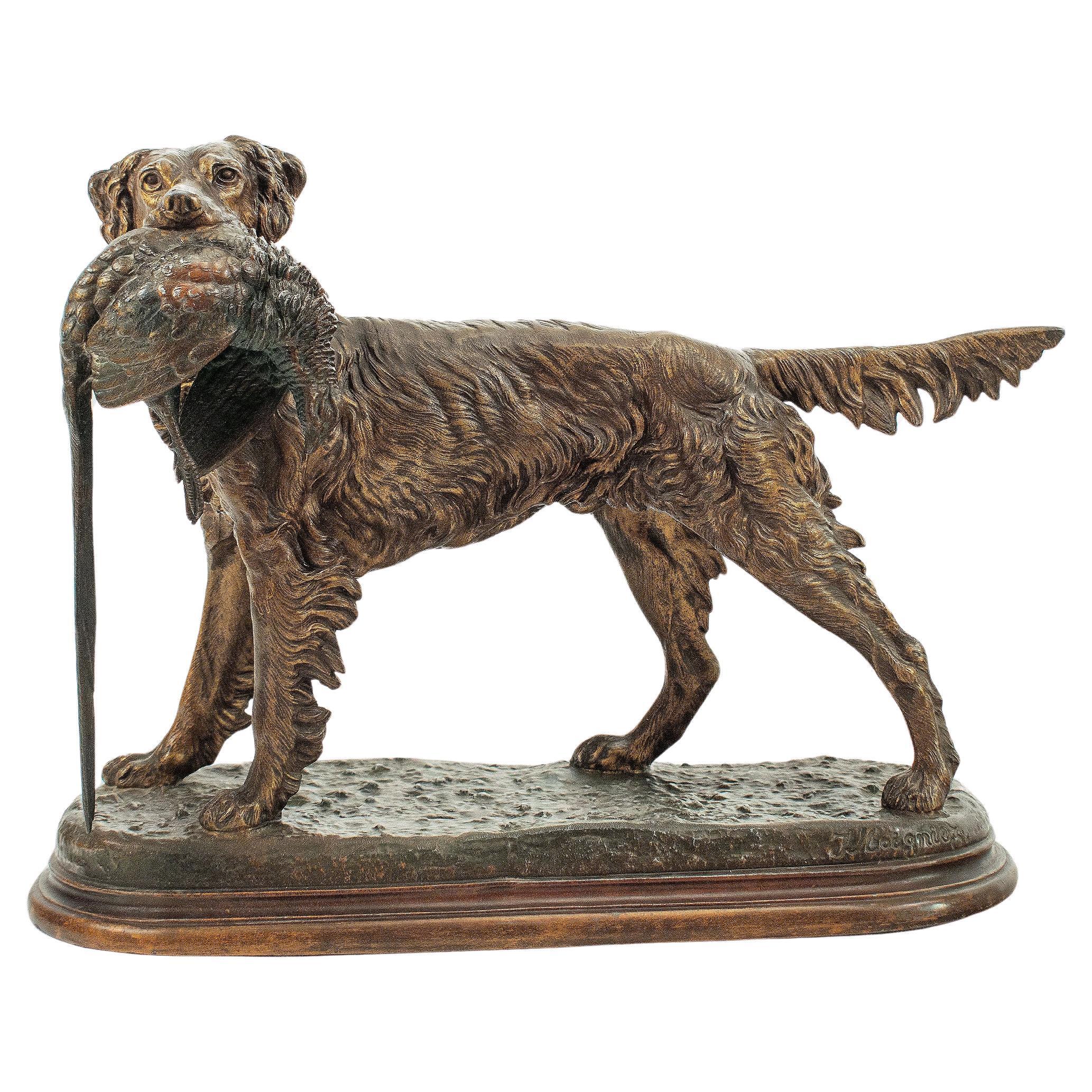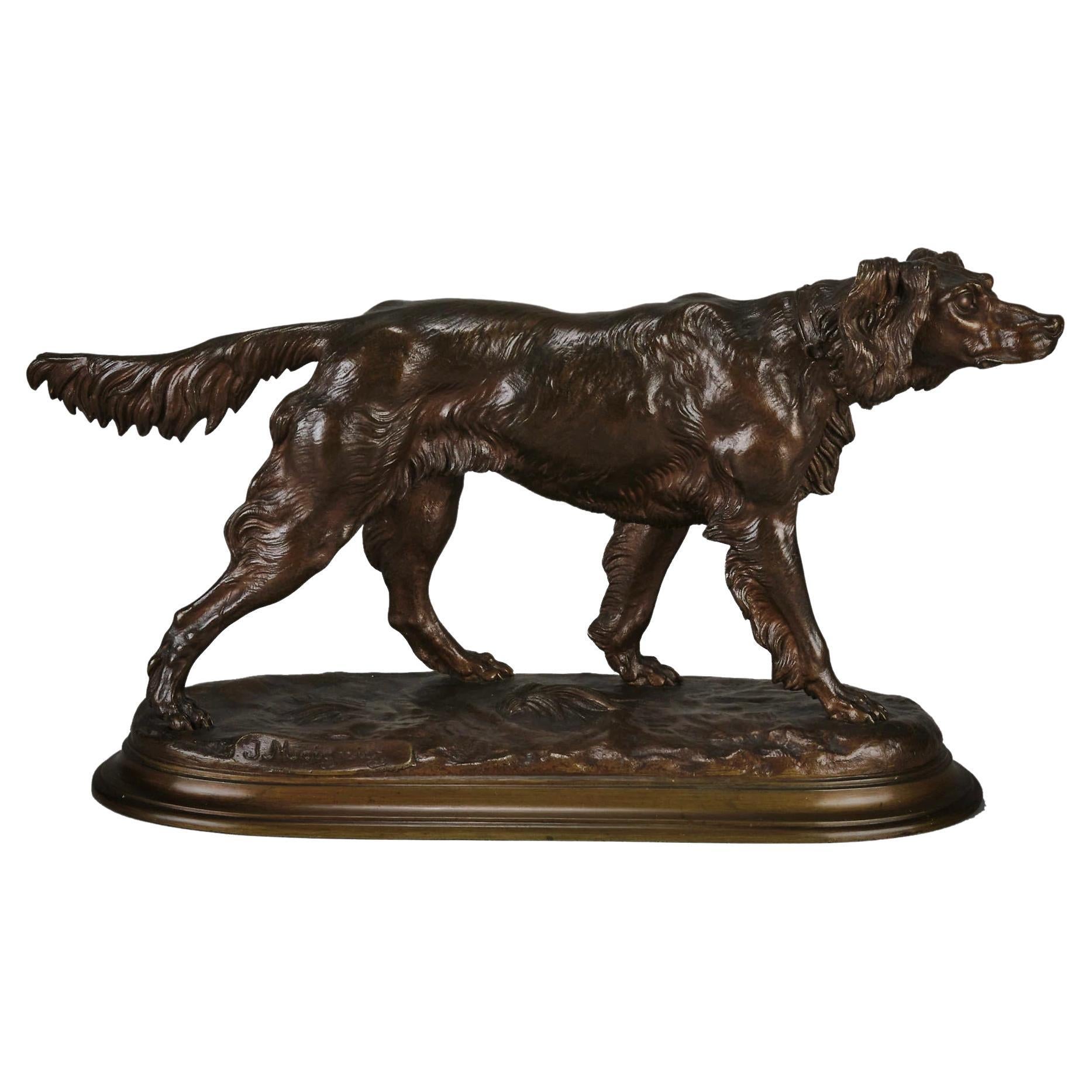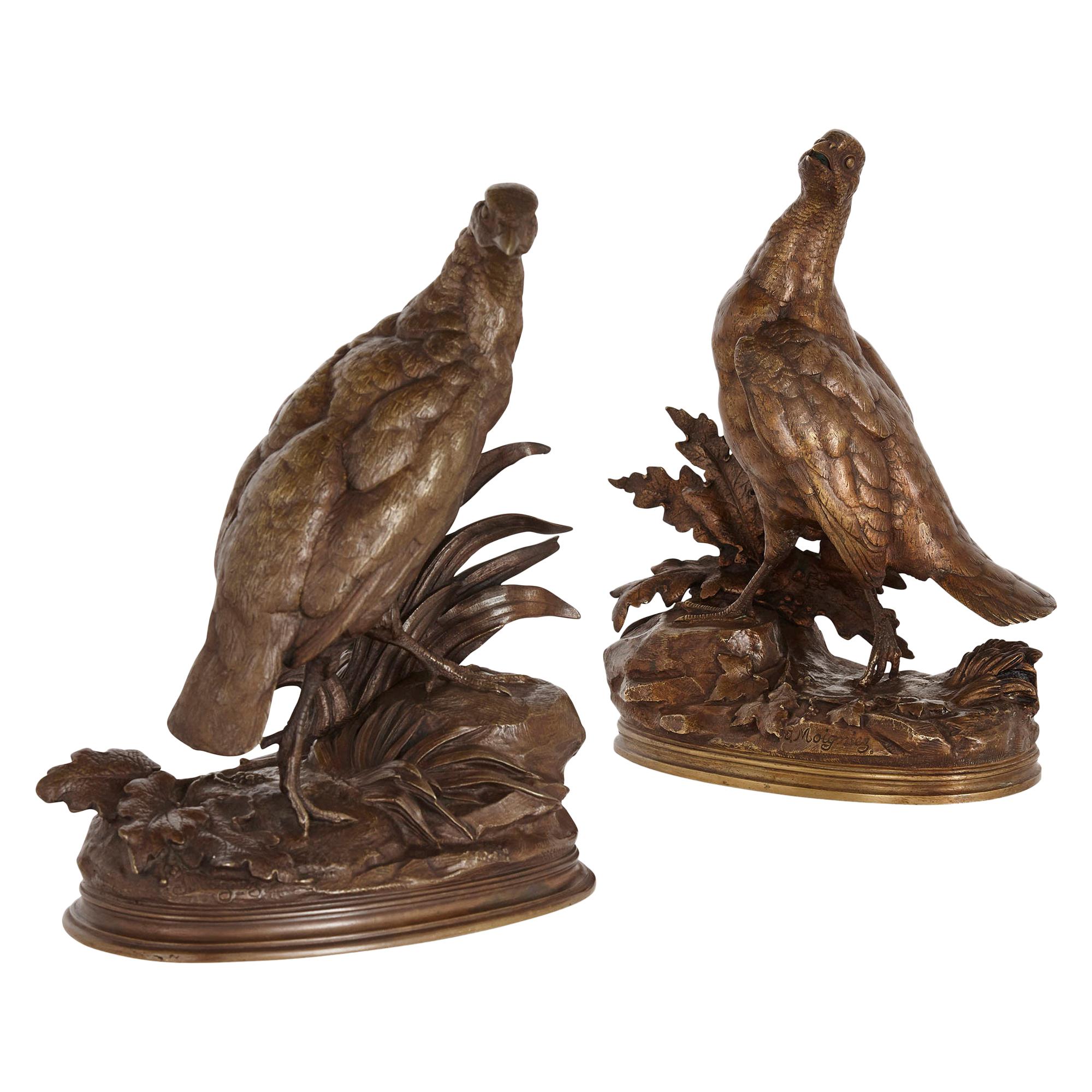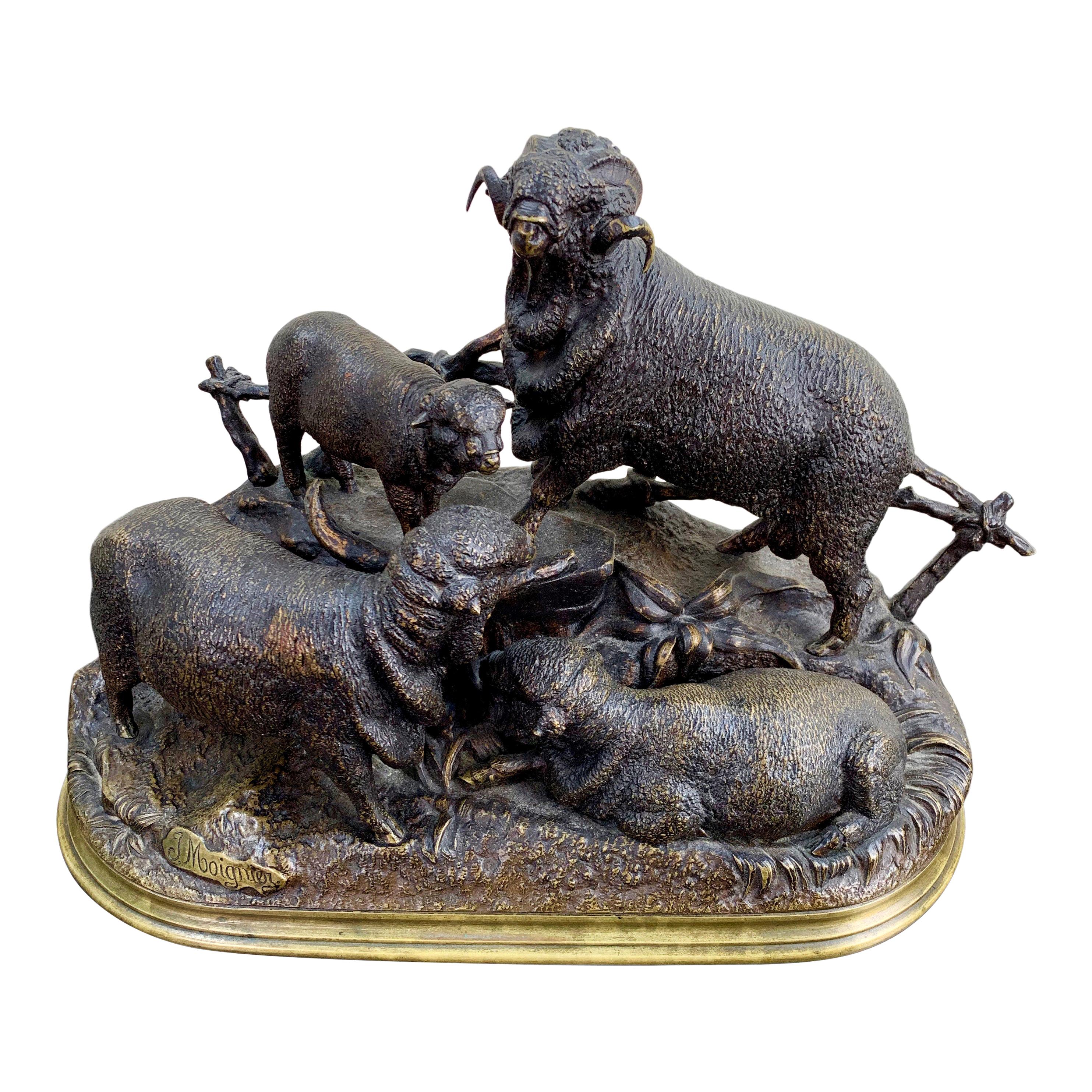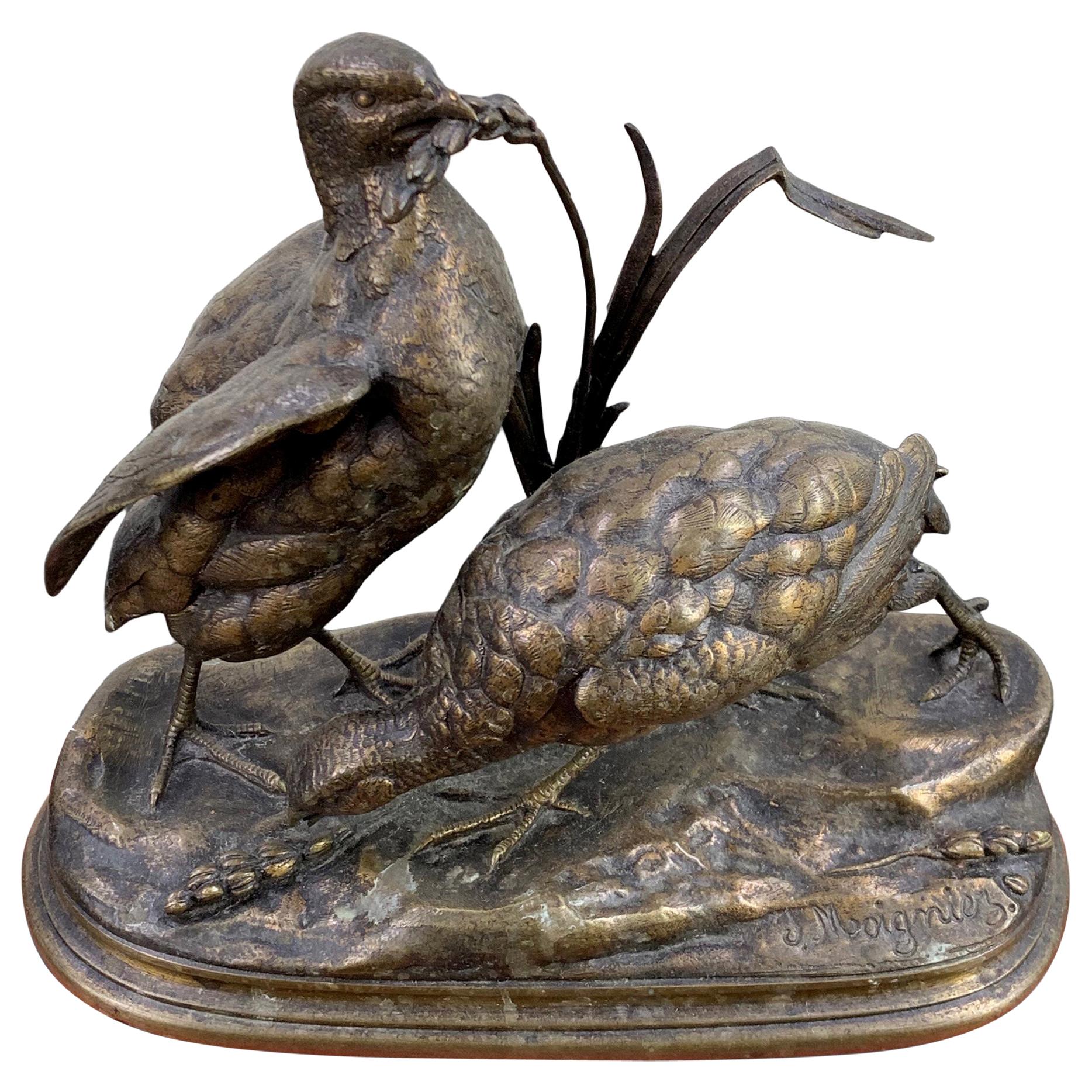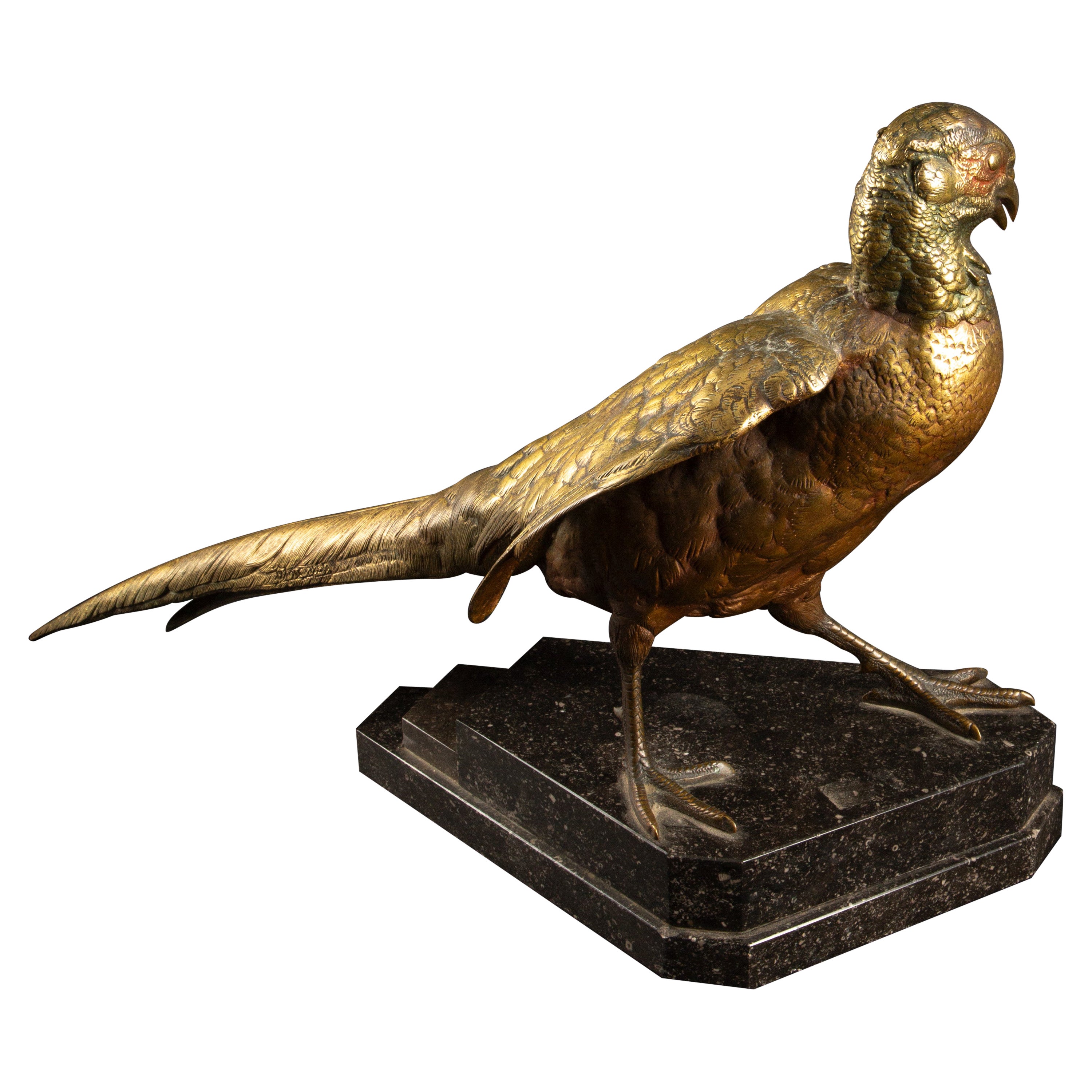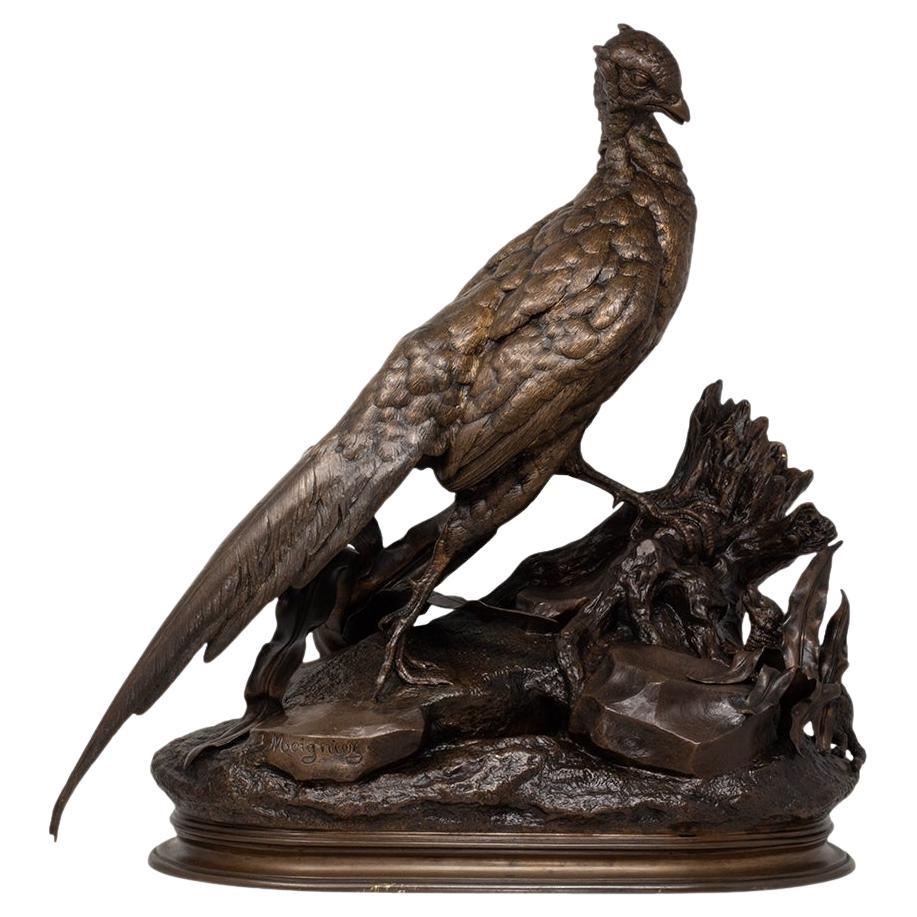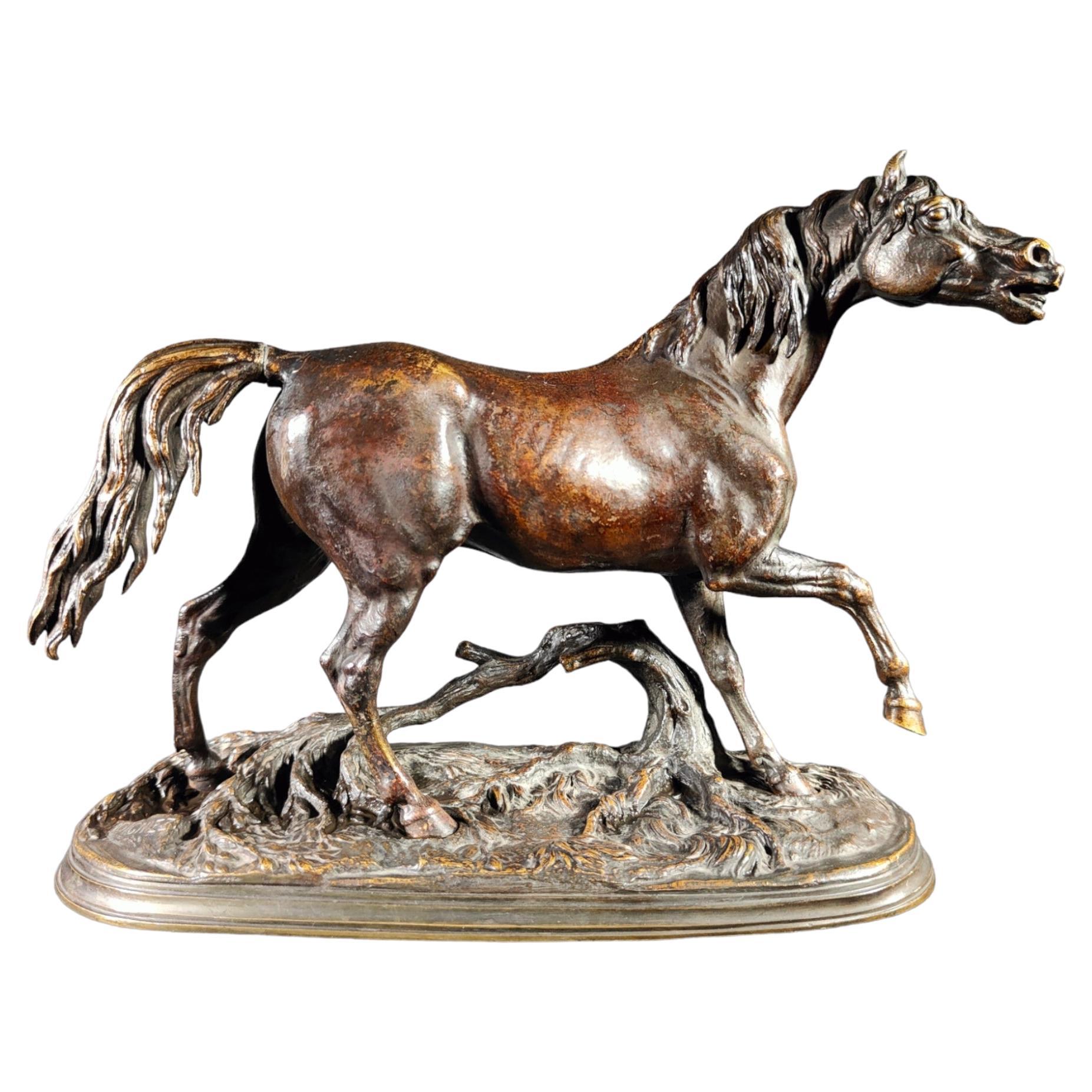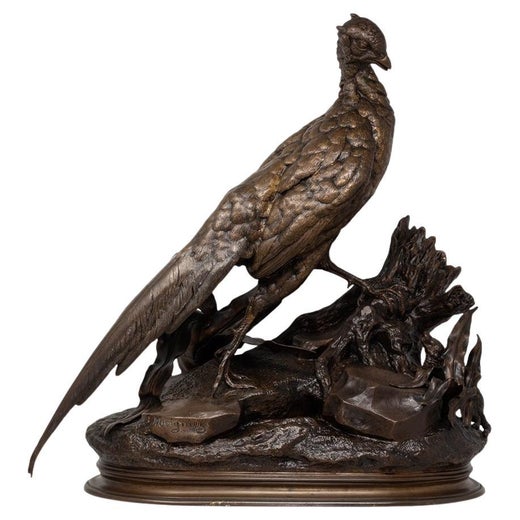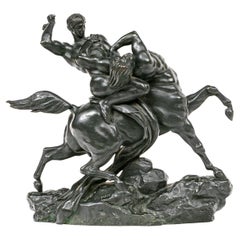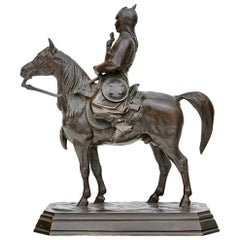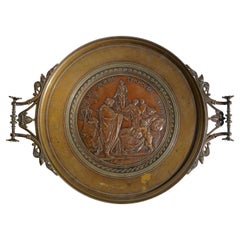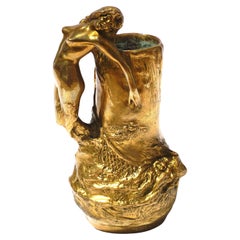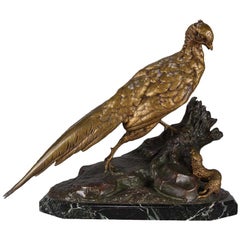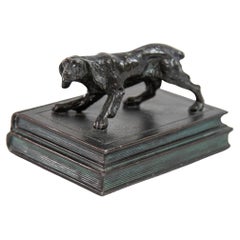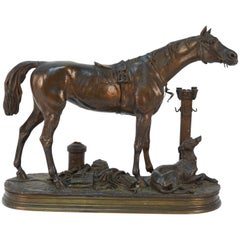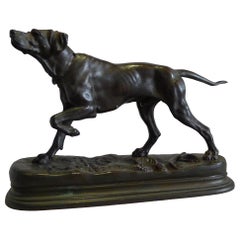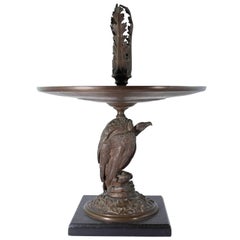
Jules Moigniez Hunting Covered Bronze Taza Animalier Vide Pouch
View Similar Items
Jules Moigniez Hunting Covered Bronze Taza Animalier Vide Pouch
About the Item
- Creator:Jules Moigniez (Artist)
- Dimensions:Height: 15 in (38.1 cm)Diameter: 11 in (27.94 cm)
- Style:Beaux Arts (Of the Period)
- Materials and Techniques:Bronze,Cast
- Place of Origin:
- Period:
- Date of Manufacture:circa 1850
- Condition:Wear consistent with age and use. Some oxidation spots. Very good condition.
- Seller Location:Dallas, TX
- Reference Number:1stDibs: LU177426190113
Jules Moigniez
Jules Moigniez was born in Senlis sur L'Oise, France in 1835 and died in Saint-Martin-du-Teire, France on May 29, 1894. The son of a metal gilder, Moigniez was a student of Paul Comolera. Moigniez debuted at the Exposition Universelle in 1855 with Pointer, Pheasant, Falcon and Weasel each in plaster. Moigniez contributed regularly to the Paris Salon from 1859–92 during which he exhibited over 30 sculptures including Pointer, Pheasant, Falcon and Weasel in bronze. Moigniez was awarded an honorable mention at the Salon and received a medal in London at the Great Exposition in 1862. Moigniez lived most of his life in Paris. During his career, Moigniez was widely popular in France, England and America. His bronzes were most decorative, particularly those of game birds. Moigniez also sculpted dogs, farm animals and equestrian groups. Moigniez's dogs reflected the "naturalism" style of Pierre Jules Mene. Moigniez’s bird sculptures were reminiscent of paintings by deHondecoeter, Casteels and Snyders. Moigniez’s sculptures of birds reflect dynamic movement as if captured through a high-speed photographic portrait. Moigniez bronzes were edited, cast, by the foundry his father opened in 1857. A wide variety of patinations, including silver plate, golden bronze and gilding were unique to these lifetime casts. After Moigniez’s death, most of his bronzes were cast by A. Gouge, who also edited most of Comolera's sculptures.
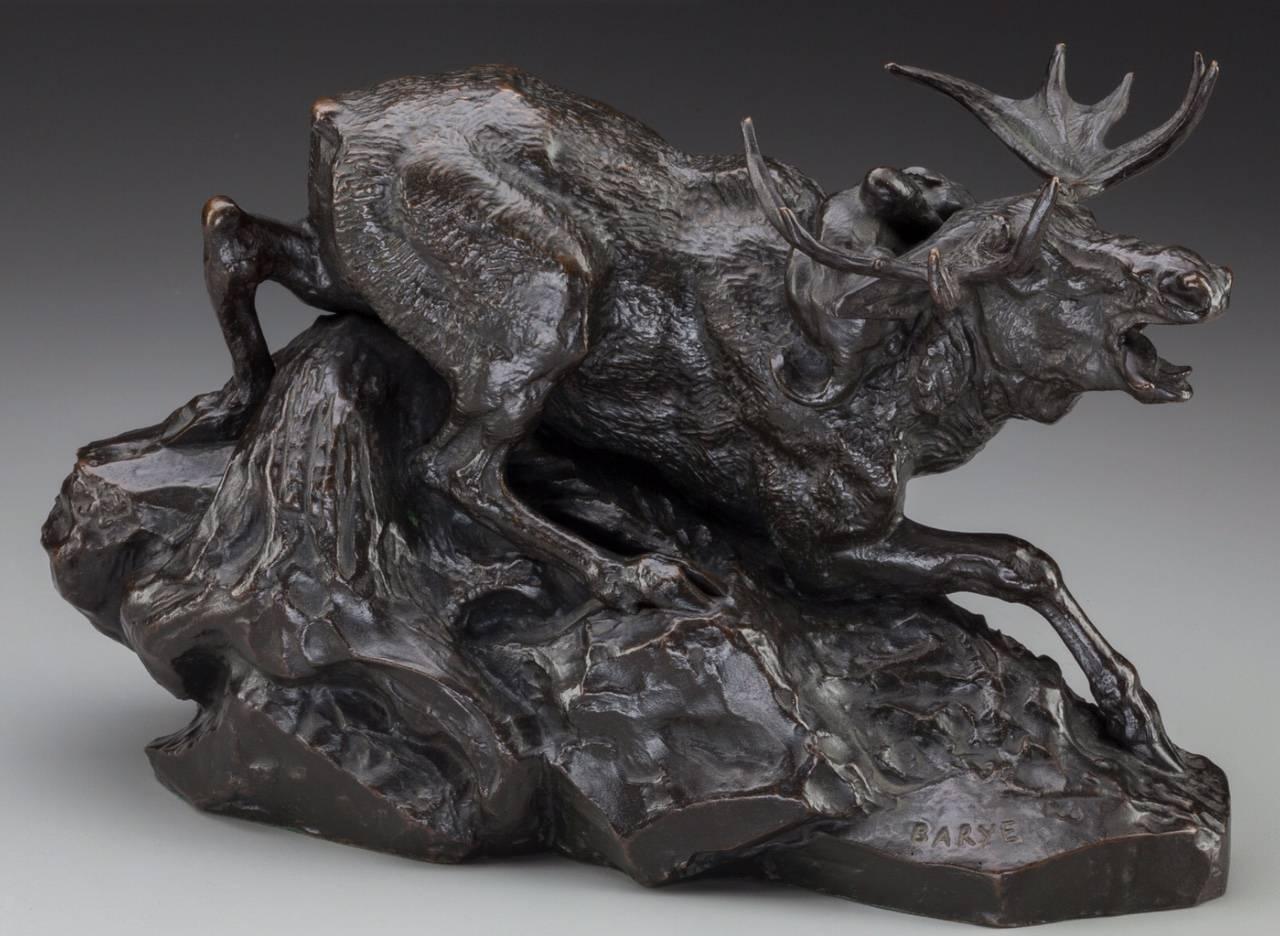
More From This Seller
View AllAntique 1850s French Beaux Arts Figurative Sculptures
Bronze
Antique 1870s French Beaux Arts Figurative Sculptures
Bronze
Antique 1880s French Beaux Arts Decorative Dishes and Vide-Poche
Bronze
Antique 1890s Czech Art Nouveau Figurative Sculptures
Bronze
Antique 1890s Japanese Meiji Animal Sculptures
Bronze
Vintage 1940s French Brutalist Figurative Sculptures
Bronze
You May Also Like
Antique 1870s French Other Animal Sculptures
Bronze
Mid-20th Century French Victorian Animal Sculptures
Bronze
Antique 19th Century French Animal Sculptures
Bronze
Antique 1880s French Animal Sculptures
Bronze
Antique Late 19th Century French Animal Sculptures
Spelter
Antique 19th Century Animal Sculptures
Bronze
